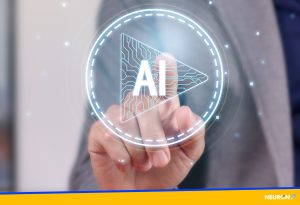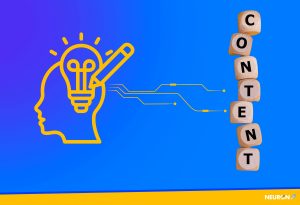Mastering AI Content Creation: Best Practices to Build a Page Using AI.
How to build websites with best AI content. Good practices.
The internet provides us with access to a vast amount of information, resources, and opportunities, but it also presents us with many challenges and threats. In order to stand out among the competition and build a loyal and satisfied community, we must create content that is interesting, valuable, and tailored to the needs and expectations of our audience.
Technology is constantly evolving and opening up new possibilities and methods of content creation. One of the most groundbreaking trends in this field is the utilization of artificial intelligence, especially techniques based on machine learning, which allow for content generation through AI algorithms.
In this article, I will show you how you can harness artificial intelligence to create incredible content for your website. I will introduce you to various methods and tools that enable the generation of texts, graphics, videos, and other forms of content using advanced artificial intelligence techniques.
We will also examine the benefits, challenges, and ethical considerations associated with this approach, so you can understand how the use of AI can alter the way you create and consume online content.

What are automatically AI content?
Let’s dive into the fascinating world of AI content creation. Imagine having a magical AI buddy that can whip up all sorts of content for you, from text to music, images, videos, and even interactive experiences. It’s like having a creative powerhouse at your fingertips!
Thanks to AI, we can now churn out content on a massive scale, and it’s not limited to just one type or area. It’s like having a Swiss Army knife of content creation. Need a bunch of articles for your website? AI’s got you covered. Want some catchy graphics and multimedia? No problemo! AI can do it all, and it’s incredibly efficient, saving you loads of time.
But here’s the real kicker: AI isn’t just a content-producing machine. It’s like a little brain that can mimic human thinking. You feed it some input—whether it’s text, images, audio, or video—and it can create something entirely new based on that. For example, tell AI about a kitten playing with a ball, and it can conjure up an image that fits the description. Or start a sentence like “Welcome to my travel blog,” and AI can craft a whole paragraph about your recent adventures in Paris. Pretty cool, right?
Now, let’s talk practicality. AI content creation isn’t just for fun; it’s incredibly useful. You can automate content creation for things like boosting your website’s search engine ranking (that’s SEO for you), tailoring content for your users, generating reports, or keeping your website fresh and up-to-date.
In a nutshell, AI content creation is like having a trusty sidekick that’s always ready to help you create awesome stuff, save time, and make your online presence shine. It’s a game-changer in the world of content, and it’s here to stay.
Examples of such content include, among others:
Website Content Creation: Producing content for websites.
Generating articles on various topics, including tips, reviews, industry information, and analyses.
E-commerce: Creating product descriptions.
Online Education: Crafting learning materials such as exercises, quizzes, notes, sets of math-related questions for various difficulty levels, etc.
Images: Crafting images for websites and marketing campaigns. Generating illustrative graphics for articles and publications.
Reconstructing low-quality images.
Videos: Generating video content for advertisements and product promotions. Creating animations and graphics for films and video games.
Automatically generating videos based on text or music.
Audio: Composing music and creating soundtracks for films and video games.
Graphics, Animations, and Interactive Elements: Creating vector graphics, animations, and interactive elements.
Generating animations and visual effects in video games: Crafting interactive experiences on websites.
utomatically generating diagrams and charts based on data.
These application examples showcase how these technologies are revolutionizing various fields such as marketing, education, entertainment, and the broader world of the internet.

Use AI content generator for Content on Static and Dynamic Websites.
Ai content on static pages.
In the current landscape where dynamism and interactivity are key elements capturing user attention online, automatically generated content becomes an incredibly significant tool for refreshing and enhancing static web pages. This concept is based on the utilization of advanced tools and modern technologies to enrich web pages with dynamic elements, despite their initial static nature.
This concept implies that while the overall structure of a page remains constant, certain sections or components can undergo dynamic generation. For instance, a website can leverage RSS feeds to instantly share the latest content or retrieve data from various sources through API interfaces.
Another solution involves presenting fresh social media events directly on the website, whether in the form of posts, images, or videos. Equally effective use of automated text involves creating dynamic product lists or portfolios, based on data integrated with a database.
In addition, websites can gain autonomy by automatically updating the events calendar based on upcoming dates in the content management system. Thanks to this functionality, the website is kept informed about upcoming events.
Furthermore, AI-written text can include randomly selected quotes or text excerpts from a defined pool, as well as showcase the latest reviews or ratings directly sourced from a database. All of this enriches the website with elements of variable content, without compromising its distinctive static layout.
The entire concept of automatically generated content allows for the partial automation of the updating and content management process on the website, resulting in refreshment and increased usability, all while preserving the website’s original static nature.
Ai content on dynamic pages.
On the other hand, dynamic websites offer more dynamic and personalized user experiences as they create content on the fly, tailoring it to their interactions and preferences.
Have you ever heard of websites that know what you need before you even realize it? In the world of personalized content on dynamic websites, this becomes a reality.
A dynamic website is a type of site that dynamically modifies or adapts its elements in real-time based on user actions, input data, and other variables. The primary attribute of dynamic websites is their ability to interact with users and generate personalized content tailored to the preferences and behaviors of each individual user.
In contrast to static websites that present a fixed set of information, dynamic websites allow for active user engagement. Through them, we can fill out forms, submit data, browse lists, or comment on content.
An example of a dynamic website is an online store where customers can add products to their cart, adjust quantities, and complete transactions. This is just a glimpse of the possibilities that this type of website offers. The key aspect here is the role of artificial intelligence, enabling the delivery of personalized content.
Some applications of content on websites, such as blogs or news portals, can incorporate both static and dynamic elements. For instance, a portal’s homepage might be static, displaying essential information, while the news section could be dynamic, showing the latest updates in real time.
Both automatically generated content on static websites and AI-driven content on dynamic websites are innovative steps toward the future of the internet. Both strategies come with benefits and challenges, but most importantly, they transform our experiences as internet users. They make content more engaging, and nuances adjust to each individual’s needs.
How to Harness AI Potential for Building Websites.
Artificial Intelligence can assist us in creating better content and interactions on our websites. This can lead to users being more eager to visit and engage with our site.
Here are some practices to consider when building websites using AI elements:
Understanding User Needs.
The most crucial step in designing AI-infused content websites is understanding user needs and expectations. Conducting demographic analysis, market research, and surveys can help identify which AI-related features and interactions will be most attractive to the target audience.
Example: If you’re creating a website for an online store, using AI chatbots for quick customer queries and customizing offers based on their past purchases can be valuable.
Chatbot Integration.
Chatbots are among the most popular AI applications on websites. They can aid in swiftly addressing user issues, providing information, and conducting real-time interactions. However, it’s essential that chatbots are user-friendly and communicate naturally.
Example: An informational website could employ a chatbot to deliver the latest news and answer reader queries.
Content Personalization.
AI can help deliver personalized content to users based on their preferences and behaviors. Analyzing data like browsing and purchasing history can enable the delivery of content that’s more interesting and valuable to users. Tools like the best mobile proxies can also support this by providing clean, rotation-friendly IPs for testing personalization across different user profiles.
Example: An apparel store website can use AI to recommend products that align with a customer’s taste based on their previous purchases.
Speech and Image Recognition.
Integrating speech and image recognition technology can significantly enhance website interactions. This enables users to utilize voice commands or upload images to gather information or perform actions.
Example: A travel website could use image recognition to identify locations in user-uploaded photos and provide tourist information.
Performance Optimization.
It’s important to remember performance optimization, especially when utilizing advanced AI features. Poorly optimized scripts can slow down page loading times and negatively impact user experiences.
Example: Using lightweight frameworks and file compression can aid in maintaining fast page loading times, even when integrating advanced AI technologies.
Adding Value to Content.
AI should not be regarded as a replacement for human creativity and skills, but rather as support and enhancement. Value should be added to AI-generated content, for instance by incorporating your own voice, opinions, comments, or emotions, to make the content more personal, engaging, and unique.

Best AI for Content Creation: Practices & Challenges.
Artificial Intelligence (AI) is a subject that sparks a lot of interest and controversy. This also applies to content creation using AI. However, it’s a more complex issue than it might seem.
It’s not just about using tools; it’s also about understanding and adhering to good and effective practices.
An important point to note is that AI is not a magical solution that autonomously generates perfect works. Rather, it serves as support for creators, acting as a tool that assists them in turning ideas into reality. Creating an effective symbiosis between human creativity and AI capabilities requires considering several key aspects.
Firstly, understanding the functioning and limitations of AI is extremely important. AI is based on algorithms and data, which bring both powerful capabilities and limitations. It’s worth realizing that AI can make mistakes or misinterpret context, especially in tasks requiring abstraction, emotion analysis, or subjectivity. This is a challenge, particularly in artistic domains where human sensitivity is crucial.
Another important point is precisely defining the purpose and scope of AI application in the content creation process. AI can be used at various stages of creation, but it’s crucial to determine its role and function within a specific project. Remember that not all types of content are suitable for collaboration with AI, especially those requiring deep artistic knowledge, empathy, or specialized expertise.
Choosing the right tools and data sources is equally crucial. There are numerous AI-based platforms, so the choice should be aligned with the needs of a specific project. However, the quality and reliability of data cannot be neglected, as they form the foundation of AI functioning. Improper data can lead to unsatisfactory or even erroneous results.
Monitoring and evaluating the process and outcomes are integral parts of working with AI. It’s important not to lose control over the creation process, despite using AI. Regular analysis of AI performance and assessing the impact of generated content on audiences are crucial for refining the process and achieving better results.
It’s also important to remember that AI generates various types of content, such as informative, opinions, emotions, or creative outputs. Each of these types has its unique application and value, but AI doesn’t always match human beings in producing content of equally high quality.
The key to success is understanding how AI functions, precisely defining goals and scope, selecting appropriate tools and data sources, and continually analyzing the process and outcomes.
However, as AI technology evolves, there are promises of further enhancements and prospects that may contribute to even more efficient utilization of AI in content creation.
The Threats Posed by AI Generated Content
Despite significant advancements in text generation, we cannot overlook certain imperfections that affect both the quality and coherence of generated content. While text generators have reached a certain level of proficiency, instances still occur where they produce low-quality materials or content lacking logical structure.
Many website creators opt for automatic content creation to meet the growing demand for information and materials. However, such portals come with certain risks. Grammatical errors and logical inconsistencies can be present in text generated by algorithms. As a result, readers may encounter content that is difficult to comprehend or even misleading.
Another important aspect is the lack of full control over automated content. As artificial intelligence plays an increasingly important role in the content creation process, there is a risk of losing control of what is actually published.
Platforms that rely solely on machine-generated content run the risk of becoming a source of misinformation or controversy. This, in turn, could undermine the credibility of the entire portal.
This challenge isn’t limited to text alone; it extends to other media such as images, videos, or sounds. The potential for manipulation and the creation of falsified materials poses the risk of spreading misinformation and fraud. Deepfakes, which are media generated using algorithms capable of realistically manipulating images or sound, appear to be inevitable in an era of constant technological advancement.
To address these challenges, developers of websites based on AI-generated content should remain vigilant and implement effective control, verification and continuous monitoring measures.
It is worth investing in tools to analyze the quality of generated content to catch possible errors and inconsistencies even before publication.
It is also an important step to educate the algorithms by training on reliable data sources to increase the accuracy of the generated material.
Undoubtedly, artificial intelligence (AI) is an extraordinary innovation that brings numerous benefits to the web design process. However, we must not forget that people still play a central role in this field. It’s human creativity, knowledge, and skills that are essential for creating websites with valuable content, aesthetic appeal, intuitive interfaces, and smooth navigation.
All these elements that make websites attractive and user-friendly are the result of human effort. Artificial intelligence can provide support and facilitate these processes, but it cannot replace the essence of the creative approach taken by designers and developers.
Nevertheless, it cannot be denied that utilizing artificial intelligence in web design opens up new horizons. Through it, we can achieve new levels of content personalization, interactivity, and accessibility. AI can also streamline design processes and aid in creating more efficient and optimized interfaces.
In conclusion
Harnessing the potential of artificial intelligence in web design is worthwhile to achieve new possibilities and excellence in the realm of website design and functionality. Nonetheless, success in this domain will be achieved through a harmonious collaboration between humans and technology. This balanced approach, built upon the synergy of these two elements, will ensure the best outcomes for both users and website creators.

FAQ: How to build websites with AI content. Good practices.
1. What is AI content generation?
AI content generation refers to the use of artificial intelligence technologies to automatically produce written or multimedia content.
2. How can I use AI tools to create content for my website?
You can use AI tools specifically designed for generating content. These tools employ natural language processing and machine learning algorithms to produce high-quality and engaging content.
3. What are the best practices for using AI-generated content?
Some best practices for utilizing AI-generated content include understanding your audience, ensuring the generated content aligns with your brand voice, reviewing and editing the content before publishing, and continuously monitoring performance to improve future content creation.
4. Which AI content generator is the best?
There are several AI content generators available, each with its own strengths and features. It is recommended to evaluate these tools based on your specific requirements and trial them before making a decision
5. How does AI content creation fit into a content marketing strategy?
AI content creation can be integrated into a content marketing strategy by automating the generation of large volumes of content, enabling faster content production and freeing up time for marketers to focus on other important tasks such as strategy, analysis, and customer engagement.
6. How can AI help with content ideation?
AI-powered tools can analyze existing content, market trends, and user data to generate content ideas. These tools can identify popular topics, trending keywords, and perform audience profiling to assist with ideation.
7. Can AI-generated content be as high-quality as human-created content?
While AI-generated content can save time and resources, it is important to review and edit the output to ensure the quality meets your standards. AI tools are constantly improving, but they still benefit from human input to refine and perfect the final content.
8. How can AI-generated content be used for social media?
AI-generated content can be utilized for social media posts, tweets, and updates. These tools can help generate catchy taglines, compelling captions, and even create visual content such as images and videos to boost social media engagement.
